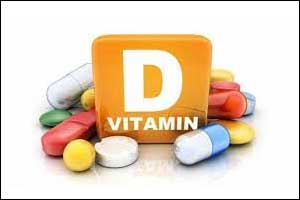- Home
- Editorial
- News
- Practice Guidelines
- Anesthesiology Guidelines
- Cancer Guidelines
- Cardiac Sciences Guidelines
- Critical Care Guidelines
- Dentistry Guidelines
- Dermatology Guidelines
- Diabetes and Endo Guidelines
- Diagnostics Guidelines
- ENT Guidelines
- Featured Practice Guidelines
- Gastroenterology Guidelines
- Geriatrics Guidelines
- Medicine Guidelines
- Nephrology Guidelines
- Neurosciences Guidelines
- Obs and Gynae Guidelines
- Ophthalmology Guidelines
- Orthopaedics Guidelines
- Paediatrics Guidelines
- Psychiatry Guidelines
- Pulmonology Guidelines
- Radiology Guidelines
- Surgery Guidelines
- Urology Guidelines
High vitamin D levels linked to lower cholesterol in children

Higher serum vitamin D levels are associated with lower plasma cholesterol levels in primary school children, according to new research published in the Journal of Clinical Endocrinology and Metabolism.
Children whose serum 25-hydroxyvitamin D levels exceeded 80 nmol/l had lower plasma total and low-density lipoprotein (LDL) cholesterol levels than children whose serum 25-hydroxyvitamin D levels were below 50 nmol/l, which is often regarded as a threshold value for vitamin D sufficiency. 25-hydroxyvitamin D is the major circulating form of vitamin D.
Sonja Soininen et. al conducted a study to examine the associations and interactions of 25(OH)D and related gene variants with lipids in children.
The study was part of the Physical Activity and Nutrition in Children (PANIC) Study, which is a lifestyle intervention study in the Institute of Biomedicine at the University of Eastern Finland. 419 prepubertal children aged 6–8 years were included in the cross-sectional study.
The researchers found that the link between higher serum vitamin D levels and lower plasma cholesterol levels was independent of body adiposity, dietary factors, physical activity, parental education, and daylength prior to blood sampling. Moreover, hereditary factors that have previously been linked to serum vitamin D levels did not modify the observed association.
The study concluded that 25(OH)D was independently and inversely associated with Triglycerides, LDL-C, and HDLC.
Vitamin D is known to be fundamental for bone metabolism, and low serum 25(OH)D levels increment the danger of rickets, osteomalacia, and osteopenia. Vitamin D may likewise enhance plasma lipid levels and have a useful effect on other hazard elements of cardiovascular infections.
Vitamin D is synthesized endogenously in the skin in the presence of UV-radiation from the sun. The most important dietary sources of vitamin D are vitamin D fortified products such as dairy products and fish. In addition to the dietary intake, vitamin D supplement use is also recommended for the general population in several countries.
The recommended use of vitamin D supplements varies a lot among the countries (mostly 5-50 μg/d, corresponding to 200-2000 IU/d) depending on age group and other factors.
More more reference log on to https://doi.org/10.1210/jc.2018-00335

Disclaimer: This site is primarily intended for healthcare professionals. Any content/information on this website does not replace the advice of medical and/or health professionals and should not be construed as medical/diagnostic advice/endorsement or prescription. Use of this site is subject to our terms of use, privacy policy, advertisement policy. © 2020 Minerva Medical Treatment Pvt Ltd